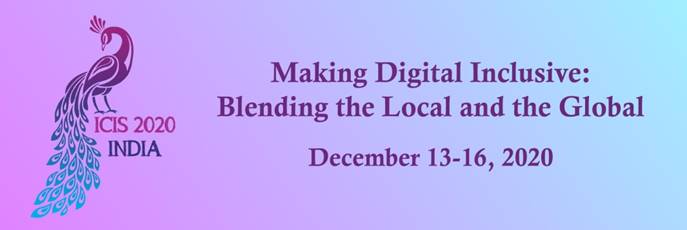Social Media and Digital Collaboration
Loading...
Paper Type
Complete
Paper Number
2285
Description
Review-in-review (RIR) is a feature that allows review viewers to generate positive or negative evaluations for primary quality evaluations of a product (e.g., ratings and reviews). The introduction of RIR feature has the potential to reshape the primary quality evaluations and causes social desirability bias in ratings because raters who desire for increased social recognition might be driven to rate at a level that is expected to generate more positive responses. This study aims to isolate this bias. Specifically, we develop and estimate a partially ordinal discrete choice model that allows rating responses to reflect a mixture of a conditional multinomial discrete choice model that captures the RIR-induced social desirability incentive. The estimation results provide evidence that individuals rate, in part, to satisfy their social desirability as the rating is diverted to gain more positive feedbacks and more text replies. This suggests a social desirability bias in ratings that is attributable to the expected RIRs.
Recommended Citation
Zheng, Jinyang; Tan, Yong; Yin, Guopeng; and Ding, Jianing, "Does Help Help? An Empirical Analysis of Social Desirability Bias in Ratings" (2020). ICIS 2020 Proceedings. 14.
https://aisel.aisnet.org/icis2020/social_media/social_media/14
Does Help Help? An Empirical Analysis of Social Desirability Bias in Ratings
Review-in-review (RIR) is a feature that allows review viewers to generate positive or negative evaluations for primary quality evaluations of a product (e.g., ratings and reviews). The introduction of RIR feature has the potential to reshape the primary quality evaluations and causes social desirability bias in ratings because raters who desire for increased social recognition might be driven to rate at a level that is expected to generate more positive responses. This study aims to isolate this bias. Specifically, we develop and estimate a partially ordinal discrete choice model that allows rating responses to reflect a mixture of a conditional multinomial discrete choice model that captures the RIR-induced social desirability incentive. The estimation results provide evidence that individuals rate, in part, to satisfy their social desirability as the rating is diverted to gain more positive feedbacks and more text replies. This suggests a social desirability bias in ratings that is attributable to the expected RIRs.
When commenting on articles, please be friendly, welcoming, respectful and abide by the AIS eLibrary Discussion Thread Code of Conduct posted here.




Comments
11-SocMedia